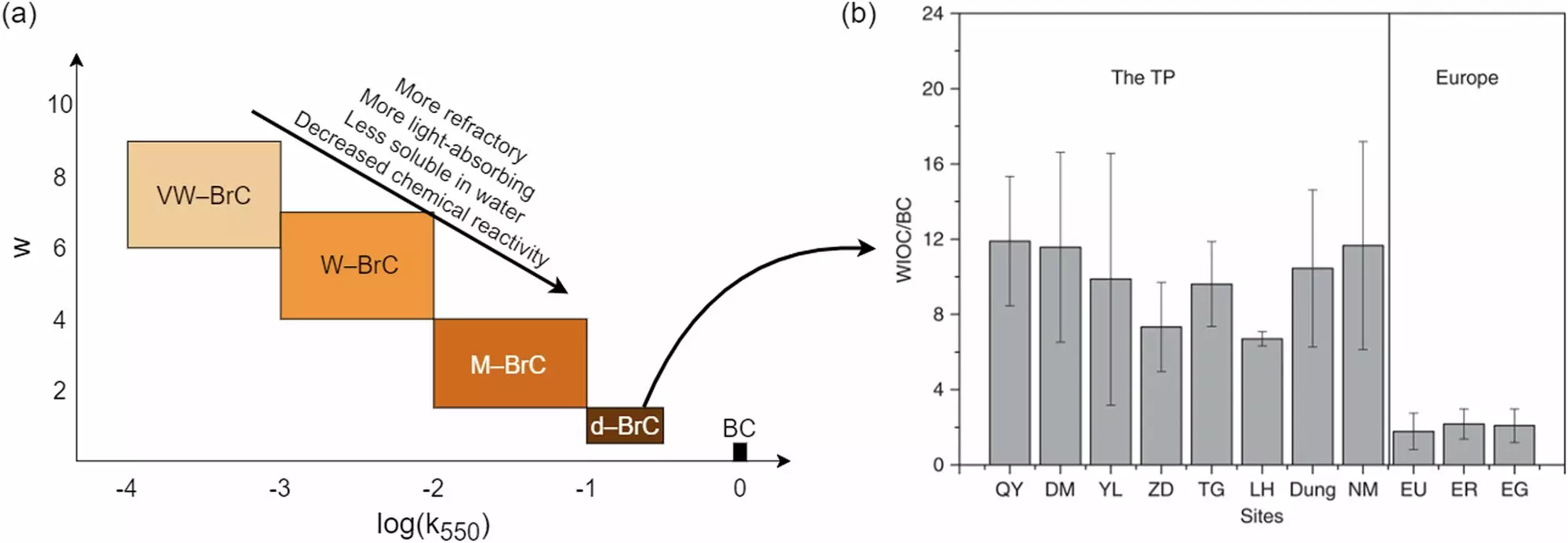When wildfires ravage through forests, they not only leave behind destruction but also potent climate heaters in the form of particles that enhance the absorption of sunlight. These aerosols, like a dark wool poncho draped over snow, darken the surface and reduce its ability to reflect sunlight. Recent research conducted by Washington University in St. Louis sheds light on the significant role of dark-brown carbon (d-BrC) in this process. Unlike black carbon, which was previously thought to be the main culprit, d-BrC is found to be 1.6 times more potent as a snow-warming agent. This discovery highlights the importance of understanding the different types of smoke particles and their impact on snow melting.
While the deposition of water insoluble organic carbon on snow has been observed in regions like the Tibetan Plateau, its snow melting potential had not been thoroughly investigated until now. Researchers at Washington University in St. Louis, led by Professor Rajan Chakrabarty, have delved into the role of d-BrC in accelerating snow melt. Described as the “evil cousin” of black carbon, d-BrC cannot be easily removed from snow surfaces, leading to a decrease in reflectivity and an increase in surrounding air temperatures. By overlooking the impact of d-BrC, researchers may have underestimated the effects of wildfire smoke deposition on snow melt, emphasizing the need for more accurate climate models and measurements.
As researchers move into the experimental phase of their study, they face the challenge of conducting snow-aerosol experiments without venturing into the field. One creative solution involves using a four-foot-tall snow globe in the lab. By introducing atomized water droplets into the chamber to simulate snow formation and depositing aerosols on it, the team aims to observe the real-world effects of d-BrC on snow melting. This innovative approach allows researchers to study the intricate interaction between aerosols and snow without the limitations of field experiments.
The discovery of d-BrC’s significant role in snow melting has broad implications for climate models and policymakers alike. As wildfires continue to increase in frequency and intensity, understanding the impact of wildfire smoke on snow surfaces becomes crucial for mitigating anomalous snow melt. With d-BrC being four times more abundant in wildfire plumes compared to black carbon, its contribution to snow warming cannot be ignored. By incorporating these findings into climate models, researchers can provide more accurate predictions of snow melt and its cascading effects on the environment.
The study conducted by Washington University in St. Louis highlights the underestimated impact of dark-brown carbon from wildfires on snow melting. By unraveling the complexities of d-BrC’s interaction with snow surfaces, researchers pave the way for a better understanding of the warming cycle caused by wildfire smoke deposition. Through innovative experiments and meticulous analysis, the team aims to contribute valuable insights to the field of climate science and guide policymakers in devising strategies to combat the effects of wildfire smoke on snow melt.


Leave a Reply